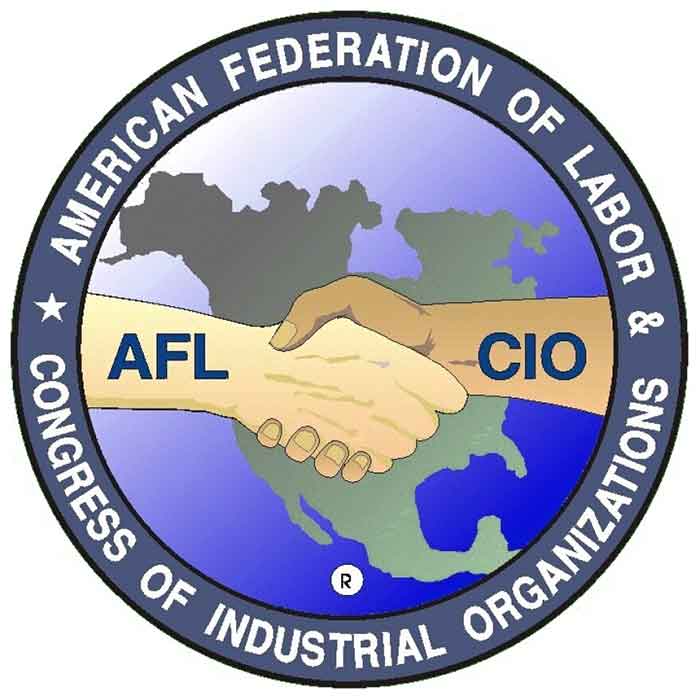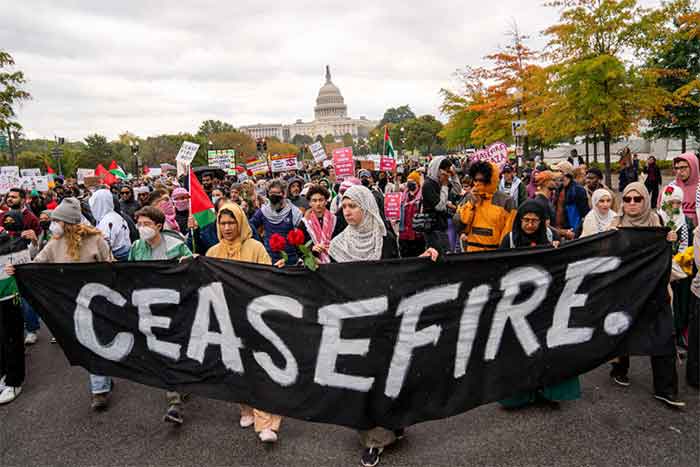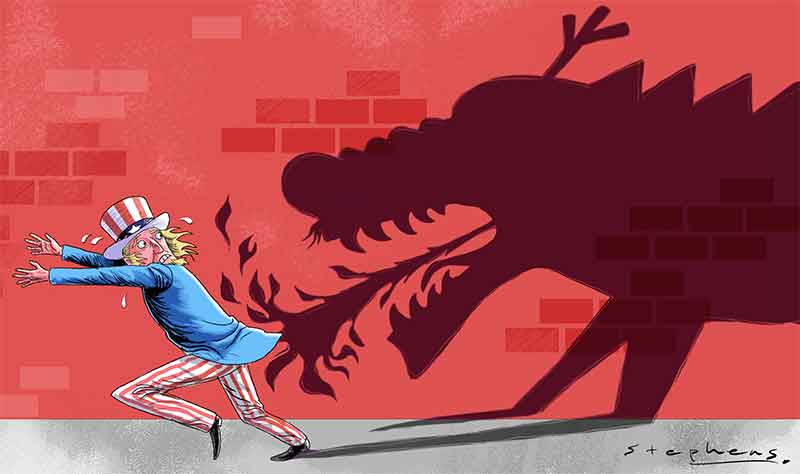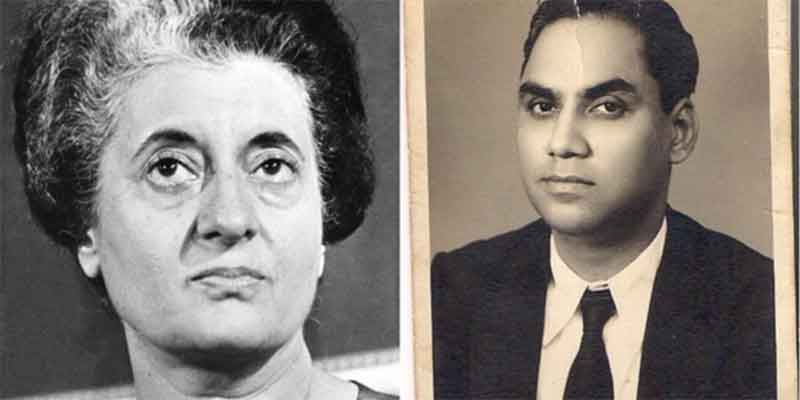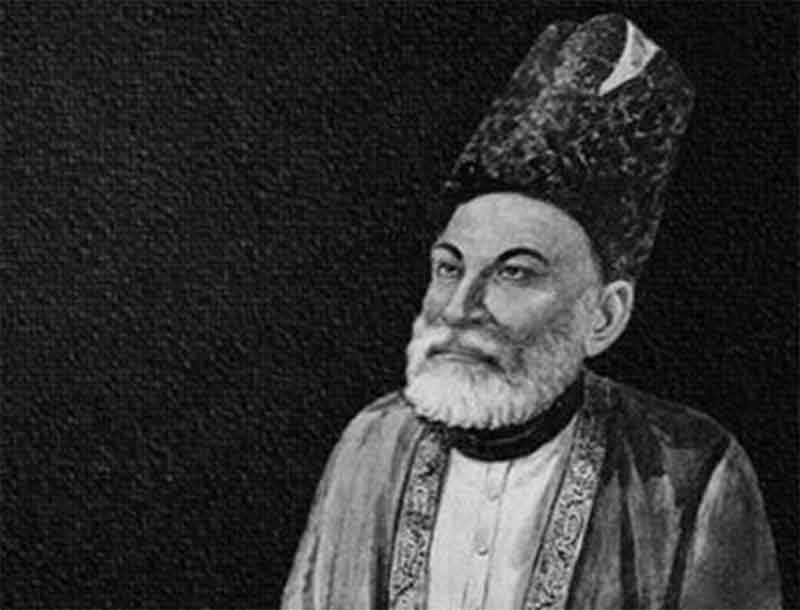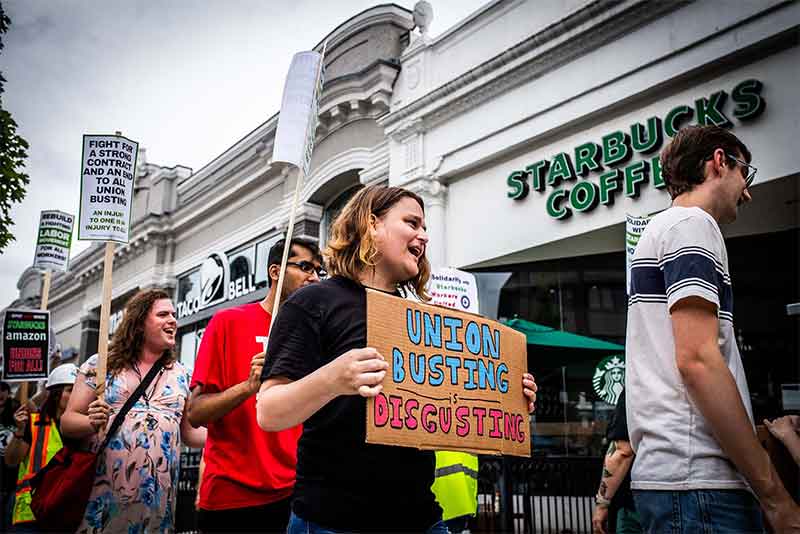
The labor movement in the United States used to be respected and looked to for leadership; people cared about what positions labor took, watched when they mobilized, noticed the causes they supported. This was especially true among the left. Today, for most of the country, crickets. Including much of the left. And yet, labor is a source of potential power unrivaled by any other bottom-up social grouping in the country.
As one who has written extensively about labor around the world and in the United States—see my list of publications at https://www.pnw.edu/personal-faculty-pages/kim-scipes-ph-d/publications with many linked to the original articles—I have been thinking over a number of years about the future direction of the US labor movement. But this thinking is not just based on writing or just academic research; I’ve done that and also have years of experience as a labor activist and as one who has worked in blue, white, and pink collar jobs over the past 40+ years and in multiple locations across the country.
I argue that we haven’t had a labor movement in the US since 1949, when the CIO (Congress of Industrial Organizations) expelled 11 so-called “left-led” unions with somewhere between 750,000 and a million members; we’ve had only a trade union movement. What’s the difference? A labor movement looks out for the well-being of all working people in the country, while a trade union movement only looks out for members of its member unions.
And, especially since 1981, when the trade union movement failed to defend the striking air traffic controllers in the PATCO (Professional Air Traffic Controllers Organization) strike when attacked by President Ronald Reagan, the trade union movement leaders have done little but watch its ranks shrink, its prestige fall, and its power decline. Millions of jobs have been shipped overseas while the manufacturing economy has been decimated, and most of the service sector jobs since created have remained ununionized, underpaid, and with many fewer protections for workers. Yes, acting together, the trade union movement has worked to elect Democrats such as Bill Clinton and Barack Obama to office, but between signing NAFTA (North American Free Trade Act) in 1994, and the failure to pass a bill to enhance labor organizing, I’d say neither could be considered blazing successes. Individual unions have succeeded here and there, but only episodically and not consistently, and usually only because of some tactical feature that gave it a winning advantage in a particular struggle. Inspiring not.
The only consistent trade union success since the early 1980s has been in sucking up US government money—often between $30-75 million annually—which has allowed AFL-CIO foreign policy leaders to act behind the backs of most of the organization’s leaders and all of its affiliated union members, in our name, in efforts generally intended to undercut foreign workers’ struggles against multinational corporations and US government foreign policy projects.
Worse, even while nonetheless being helpful to foreign workers in a few cases, the AFL-CIO has acted to legitimize the imperialist National Endowment for Democracy (NED) by serving as one of its four “core institutes,” along with the international wing of the Democratic Party, the international wing of the Republican Party, and the international wing of its domestic archenemy, the US Chamber of Commerce, in NED’s on-going project of supporting and advancing the US Empire.
Thus, the trade unions’ leadership has generally done little to advance the interests and well-being of US workers, while acting in differential manners—usually bad—with foreign workers. I don’t think this was what Karl Marx and Frederick Engles were expecting when they echoed the French feminist, Flora Tristan, urging “Workers of the World, Unite!”
Yet, despite the general failure of the trade union movement leadership, especially since 1981, the reality is that unions are one set of institutions that, at their best, are of the workers, by the workers, and for the workers. You see workers fighting to make their unions “real”—trying to make them part of a labor movement that serves the interests of all workers if not the entire society—over the years. We see workers creating reform movements over the years trying to transform their unions for the benefit of the entire membership if not all workers.
Perhaps the most famous of late has been the reform organization UAWD (Unite All Workers for Democracy) inside the United Auto Workers. UAWD came together to fight for direct elections of UAW leadership instead of the convention elections, which had led to a one-party state since 1946 and the election of Walter Reuther. Over time, a number of top-level UAW leaders were charged with corruption, and in a consent agreement with the Federal government, the UAW had to shift to direct elections for top officers. UAWD put forth a partial slate headed by Shawn Fain, and then proceeded to win every leadership position they sought, ultimately gaining control of the international union’s executive board. In turn, Fain and his administration led the 2023 fight against the Big Three auto companies—General Motors, Ford, and Stilantis, the parent of Chrysler—which then won their strike in the Fall. While the UAW did not win all of its demands in the strike, it clearly demonstrated the power of organized workers who have a leadership that will fight for and with them. And following that successful strike, Volkswagen workers at Chattanooga, Tennessee voted to join the UAW, with help from the German union, IG Metal, although in the face of governors from six southern states telling them to not do so.
It is important to understand that unions are important to many workers, that they make e a difference in the workplace, and they usually mean higher wages, better benefits, seniority systems, and a recognizable “rule of law” in the workplace, the latter which places some limits on management authority and discipline; a big difference from the situation of most workplaces where workers give up most if not all of their rights when they enter company grounds.
So, where does this lead us?
I want to build off a study that I did originally for my PhD dissertation in 2003. It was a comparative-historical sociological study of unionization in the steel and meatpacking industries in the greater Chicago area (including Northwest Indiana) between 1933-1955, examining how the unions addressed racial oppression in the workplace, union, and communities in which these workers operated. Long story short: despite drawing from the exact same labor pool—white ethnics from eastern and southern Europe, African Americans from the rural South, and some Mexicans—the steelworkers’ organizations ignored the issues of white supremacy and racism, while the packinghouse workers directly confronted it: in 1939, in racist, segregated Chicago, eight out of 14 packinghouse local unions were headed by African Americans!
From this study, and differing from much research on the CIO (Congress of Industrial Organizations), the labor organization both of these unions ultimately joined, I recognized there were two different conceptualizations of trade unions within the CIO; ultimately, I referred to that of the steelworkers as “business” unions and that of the packinghouse workers as “social justice” unions. And this was important because I found that how the members thought about their union determined subsequent organizational behavior.
And that brings things to where we are now: there are still two forms of unionism available to unions and their members. Business unions focus the power they are able to mobilize to fight for workers in the workplace, such as wages, working conditions, seniority, “rule of law,” etc. However, they generally ignore anything beyond the workplace, despite workers having lives outside of the workplace. Social justice unions focus that power in the workplace to not only address workplace issues, but they use the power in the workplace to also address things in workers’ lives beyond the workplace, including things such as racism, misogyny, and homophobia, as well as things like health care, education, the climate crisis, etc. Ideally, unions becoming or transforming themselves into social justice unions would consider the range of interests from the local to the global, ultimately seeking to join with unions and other people’s organizations around the world to make things better for all.
Recognizing these two different possibilities and what union members want to do in light of this understanding is important. It is important that these issues get discussed by the members of each union themselves; this is not limited to union leadership or even activists.
The reality is that the trade union movement today is so weak that unions rarely have a chance to win their battles without gaining public support. Unions have often recognized this and have appealed to community support to help them win their battles. Yet, what do the communities get back from the unions? Often nothing. This one way form of “solidarity” is simply not sustainable; you can only withdraw from the well so many times without giving back before it runs dry.
Transforming business unions into social justice unions offers a solution: they build on their foundation in the workplace but join with community members—however defined—to work together in ways to improve life for all concerned.
There are issues that simply cannot be solved on a local, regional, or even national basis; the climate crisis jumps immediately to mind, although there are other issues such as global sexual slavery and related issues, pandemics, war and empire that can only be approached from a global perspective. We have to understand issues such as these from a global perspective and begin educating and organizing our union sisters and brothers on this level. But our ideas about our unions must at least allow for this, if not actively encourage work on this level by all members. Key to this is implementing an educational program that confronts these issues and encourages workers to think about how their union could work to address issues key to workers in this larger sense. The old slogan, “Think globally, act locally,” encapsulates these ideas.
This, however, is not going to change by itself: activists in each union need to stimulate discussion within their organization about whether they should confine their unionism just to the workplace, or to use that power for the good of all.
I would suggest trying to find a group of union members that think having this debate within one’s union to be crucial, and work to unify this core. Then they could create a campaign to spread this issue throughout the union, initially through one’s workplace and/or local and then through the national or international union they are affiliated with. It should be run the same way as any organizing campaign; and that is to win.
When confronted by this question—how do we want our union to go forward, alone or with our neighbors (from the local area to the globe)?—this is a question that encourages workers to think about these issues and get involved in participating in strengthening the union. Once a union is seen as something everyone participates in, or at least as many as possible, instead of just something that “others” do, we strengthen our individual unions. When we come to common responses, then we can extend our conceptualization of the union to other unions, locally, regionally, and nationally.
This can be extended globally when we find out what is happening elsewhere: there are workers around the world seeking to join globally to fight for a better world for all. Yes, this is happening among workers in other imperial countries but, as we see in the case of SIGTUR (Southern Initiative on Globalization and Trade Union Rights), workers in Africa, Asia and Latin America are finding ways to unite across their geographical regions and the globe to organize for a better world for all. I think they would be delighted to have North Americans join in their project, and that can only happen when unions take that broader, social justice union approach.
In short: innovate or stagnate. The business unionism of the past 40 years (in particular) has been a failure. Either we think about unionism in new ways and establish new ways of thinking about and joining other movements, or most of our unions die a long, slow, painful death.
It’s time we start rebuilding the labor movement: for the good of all!
—
Kim Scipes, PhD, has been a member of the Graphics Communication International Union, the American Federation of Teachers, and the National Education Association, and is currently a member of the National Writers Union. He lives in Michigan City, Indiana. He recently retired and is now a Professor Emeritus of Sociology at Purdue University Northwest in Westville, IN, after teaching 19 ½ years.


